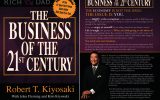You’ve come up with a new marketing strategy for your business only for it to end in failure a few weeks later. You’re not sure what you’re doing wrong but your company can’t keep going without sales. The root of your problem is that you most likely have failed to follow through with the essential first step to any successful marketing plan. Setting your goal.
To clarify, “we want to make as much money as possible” or “selling as much of our product as possible” doesn’t qualify as a goal. It’s a little broader than that.
To help you with following through with this first step so you can sell more, here is a quick guide on what does qualify.
The Problem with Not Setting a Goal
When you don’t set a goal then your marketing plan fails to have focus, this is true. There are other problems that can arise from it, however. For example, if your goal is to “sell as much of our product as possible”, lazy employees will take the opportunity to sell the bare minimum.
You will have some employees that decide to go the extra mile and that will make up for the lazy ones for a bit but it won’t last. Overtime burn out will set in and their productivity will slow down.
What Sort of Goals Should I be Making?
You’re probably wondering what goals you should set in place to stop the above scenarios from happening. To tell the truth, the only rule here is that the goal should be challenging and measurable.
When a goal is measurable it gives your employees something tangible that they can work toward and actually see their progress. Being able to see the finish line of sorts will keep them on task.
Making the goal challenging will keep your employees on their toes. It keeps things interesting so they will never get bored. If the goal is too easy they will become disinterested because it’s not fun and they won’t get that sense satisfaction when they complete it. On the flip side of this, if you make the goal too challenging it will frustrate them. You need a happy medium.
Goal Setting Methods
There are three different goal-setting methods that you can try out, market potential, historic, and FTE. They are used by businesses like yours everywhere so you may have heard of them. Just in case you haven’t, we’re going to go over them briefly.
Market Potential Method
As the name suggests when you’re using this method you’ll take time to analyze your market potential. When you’re doing this you’ll want to look for any potential threats to your goal so you can determine the level of progress you can make.
The first step to going with this approach is to decide what your market is. Most business owners do this by customer type, industry, product, or geography. Sometimes they do a mixture of all of them. Keep in mind that you can go as broad or narrow as you want with it.
Next, you’re going to measure your market size. This is usually done in dollars or units. A lot of times you can get this number by plugging information into a search engine. If you’re not so lucky you’ll need to do a little bit of math. Estimate the number of people in your market and then multiply that by the average consumption of your product. Take these figures and multiply it by the price of the product.
You’ll need to now determine what your limiting factors are. These factors are anything that will stop you from meeting your market goals. They usually fall into the categories of limited resources, competition, and government regulations. You’ll use a similar method to put these factors into numbers that you did when you were figuring out your market potential numbers.
Once you have these numbers you’re going to use them to determine your market penetration goals. You’ll take whatever factors are hindering your success and subtract that from your market potential.
Historic Method
The historic method involves you taking your numbers from the previous year and applying them to how fast your business is growing. If you’re a new business then you’ll look at a similar company’s numbers instead.
Go ahead and decide what your market is and your market potential as you did with the previous method. Once you have these numbers you’re going to look at your sales from last year. If they are stable then you don’t have to do much else. If they aren’t then you’ll have to find the average of your sales from the past couple of years. From there all you have to do is take this number and multiply it by your market growth.
FTE Method
The FTE (full-time equivalent) method involves calculating how many full-time employees you have working for you. Again, you’re going to figure out your market and market potential. After that, you’ll look at how many full-time employees you have on your schedule.
You’ll then determine each employee’s breakeven points. This is something that you should be keeping up with anyway so it shouldn’t be too hard to get it. You’re going to take the breakeven points of each person and multiply them by the number of full-time employees you have on the payroll. Add in your profit target and this will give you your overall goal.
After the Goal is in Place
You can try out one of these methods or do a little bit of all three to get your goals in place. Regardless of what you do, it should give you all your sales quotas that you can then use to set those measurable and challenging goals that we were talking about.
Use a marketing information system to keep you updated with how well this goal is going and then change it accordingly throughout the year.
Your First Step Toward Marketing Success
If your marketing strategy isn’t going as planned it could
be because you’ve missed the first step; putting your goals in place. Use the
tips that you’ve read here to put a challenging measurable goal in place for
your employees and start your path to success.











